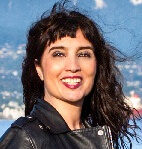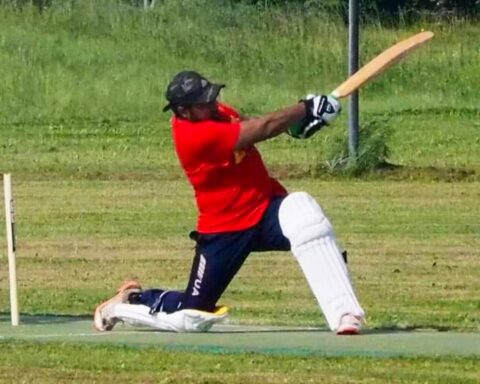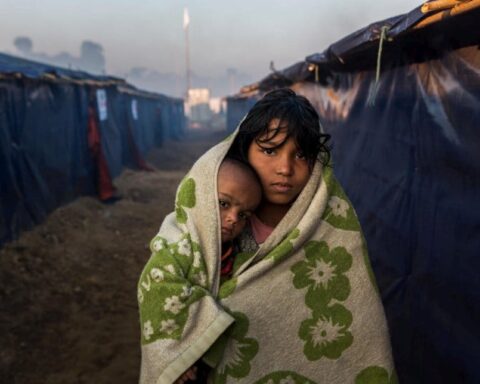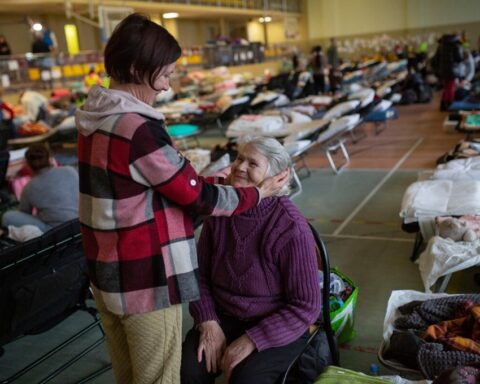In this season of sad anniversaries, as the 12-year-old ghosts of the invasion of Iraq enjoy a violent adolescence, the consequences of the North Atlantic Treaty Organization (NATO)’s armed intervention in Libya born five years ago last month run amok like dangerous offspring and Syria’s descent into madness endures its fourth year, my thoughts turn to Yemen.
It is yet another Arab land, rich in history and culture and ancient sites, fraught with corruption, civil war and now foreign bombardment.
As Saudi Arabia continues its bombing campaign and Iranian-backed Houthi rebels carry out their own agenda, and possibly that of former Yemeni leader, Ali Abdullah Saleh, the United Nations (UN) reminds us that the majority of Yemen’s 600-plus war victims are civilians and lays blame firmly on both sides.
Transgressing in a Foreign Land
It was 20 years ago this month that I first went to Sana’a, the ancient city that was bombed again this past week, oddly enough for a symposium on peace in Somalia.
A United Nations Educational, Scientific and Cultural Organization (UNESCO) culture of peace program had flown in dozens of Somali intellectuals, clan leaders and other assorted characters in an effort to help galvanize the rebuilding of a failed state’s civil society, in a neighbouring “safe haven”.
Unfortunately, UN protocol dictated a maximum of three minutes per speaker. This was just about as much time as everyone needed to introduce themselves and their clan, acknowledge everyone else in the room and their clan and then their time would be up.
A French journalist and I decided to escape the well-intentioned bureaucratic madness taking place at the Sana’a Sheraton for a brief foray into the old city.
I felt an instant connection to the place – perhaps partly because my Lebanese ancestors descended from Ghassanid tribes that originated in Yemen.
We wandered into the market and before long were surrounded by a group of Yemeni men dressed in traditional garb, complete with jambiyya – tribal daggers.
One of them stepped forward and gestured to my dress that went only to mid-calf. “Please,” he said, and then placing his hand on his heart, “We are Muslim.”
I immediately made for an adjacent textile stall and bought the first long piece of knee covering cloth I could see, as well as an antique silver necklace inscribed with Koranic verses.
Hoping to appear more pious, I put on the necklace and wrapped the embroidered cloth around my waist covering my offending limbs.
Within seconds I was followed again – this time by a group of giggling schoolboys. What is it now, I asked one of the merchants? Am I not sufficiently covered?
With a smile he told me, “Well, yes, but now you are dressed like a man.” I had unwittingly donned a Yemeni futah – a kind of sarong worn by men.
In spite of my transgressive transvestism, my French friend and I were soon invited to the home of one of the boys for tea.
I remember a place full of history and hospitality, world heritage sites and sung poetry; a place that then had just survived another civil war, but was riding high on post unification oil prices.
In an amazing old city “tower house” from the 11th century, his mother served us sweets and his father spoke of Yemen’s great poet, Abdullah Al-Baradouni.
I felt an instant connection to the place – perhaps partly because my Lebanese ancestors descended from Ghassanid tribes that originated in Yemen.
I wore the antique Koranic amulet I bought that day in the market, designed to ward off evil, close to my heart for years. A few months ago, its slender silver chain snapped in two.
Remembering the Past
I remember that time now, 20 years later, as Yemen itself is on the brink of failed state status.
Two unkind decades later, as Iraq, Syria and Libya burn, I remember a place full of history and hospitality, world heritage sites and sung poetry; a place that then had just survived another civil war, but was riding high on post unification oil prices.
It was a place with a history of foreign occupation and fierce resistance. A place where in 1932 a group of Hejazi liberals fled Saudi and planned to mount an insurrection against the Wahhabists before the British sent warplanes to foil the attack.
What if, in the Middle East’s most impoverished nation, there were no water shortages, no falling oil prices, no drone attacks, no al Qaeda turned ISIS, no proxy wars being fought by the powerful at the expense of the weak?
I remember a place before digital culture and the Arab Spring brought horror to our awareness in such a casual way.
I wonder now at the past two decades and ponder what ifs.
What if Yemen’s agricultural sector had not been co-opted by qat cash crops? What if, in the Middle East’s most impoverished nation, there were no water shortages, no falling oil prices, no drone attacks, no al Qaeda turned ISIS, no proxy wars being fought by the powerful at the expense of the weak?
What if we who love the region did not have to bear the heartbreak of watching another nation ripped apart at the seams? The horror of refugee camps being bombed by America’s regional ally, of the complete vulnerability of Yemeni civilians trapped between militias and foreign bombardment, in dire need of aid.
… [T]here is a new nation emerging: the country of the dispossessed – an army of the displaced, of widows, of orphans, of refugees.
It’s not just a question of having seen this movie before, but of so many familiar narratives spinning at once. I watch what is unfolding in Yemen – a regional crucible in so many ways – and I remember decades of turmoil.
Oh Sana’a – the Sharif city so rich in Judeo-Christian-Islamic history – you bring to mind Beirut and Baghdad and Damascus and Tripoli. There is one heart and I cannot bear to watch it smashed to pieces again.
The Rise of the Dispossessed
From all these failed and failing states, invaded, occupied, bombed and “liberated” since my first visit to Sana’a, there is a new nation emerging: the country of the dispossessed – an army of the displaced, of widows, of orphans, of refugees. Of people like the giggling schoolboy who 20 years ago took us to tea with his family in a UNESCO world heritage site neighbourhood – perhaps a family man himself now, holding his children close as the bombs fall.
Oh Yemen, once a centre of learning governed by the Caliph al-Muzaffar Yusuf (who, after Baghdad fell to the Mongols, chose the Yemeni city of Taiz as his capital and of whom it was written “His pens used to break our lances and swords to pieces”), I invoke your poets at this time of crisis, with a multitude of new Mongols at your gates.
And I pray for the healing of your heart, and of all our hearts. Inshallah el Salam.
As Al-Baradouni once wrote in a poem that now bears regional resonance:
From Exile to Exile
My country is handed over from one tyrant to the next,
a worse tyrant; from one prison to another,
from one exile to another.
It is colonized by the observed
invader and the hidden one;
handed over by one beast to two
like an emaciated camel.
…It digs
in the muted graves looking
for its pure origins
for its springtime promise
that slept behind its eyes
for the dream that will come…
Hadani Ditmars is the author of Dancing in the No-Fly Zone: a Woman’s Journey Through Iraq, a past editor at New Internationalist, and has been reporting from the Middle East for two decades. A fifth generation Canadian of mixed ancestry, she first reported from Yemen for African Business in 1995. Her next book is a political travelogue of ancient sites in Iraq.





